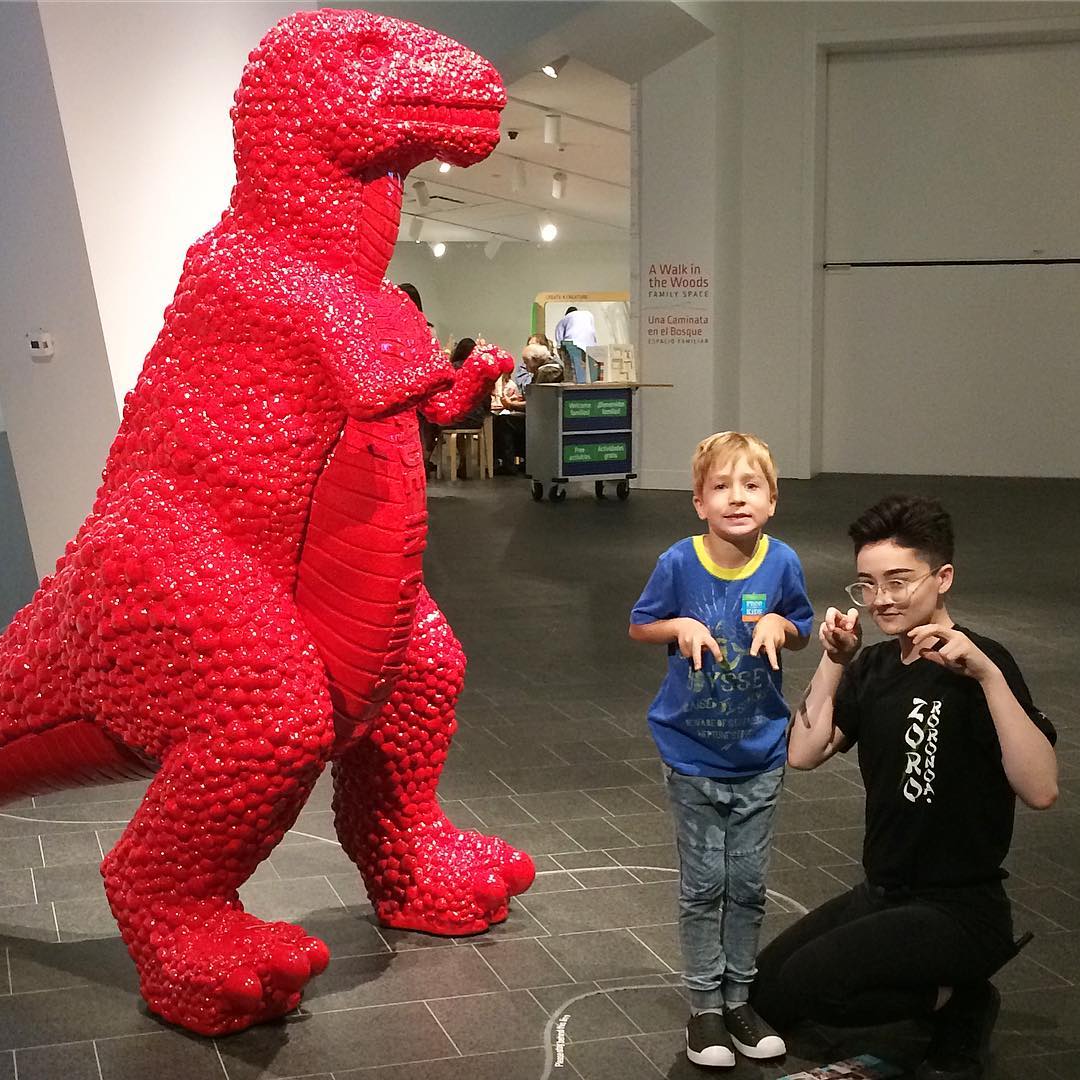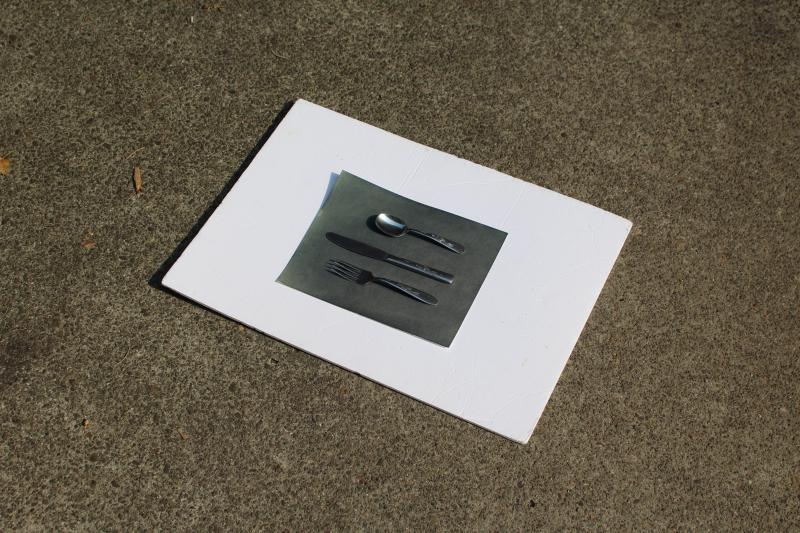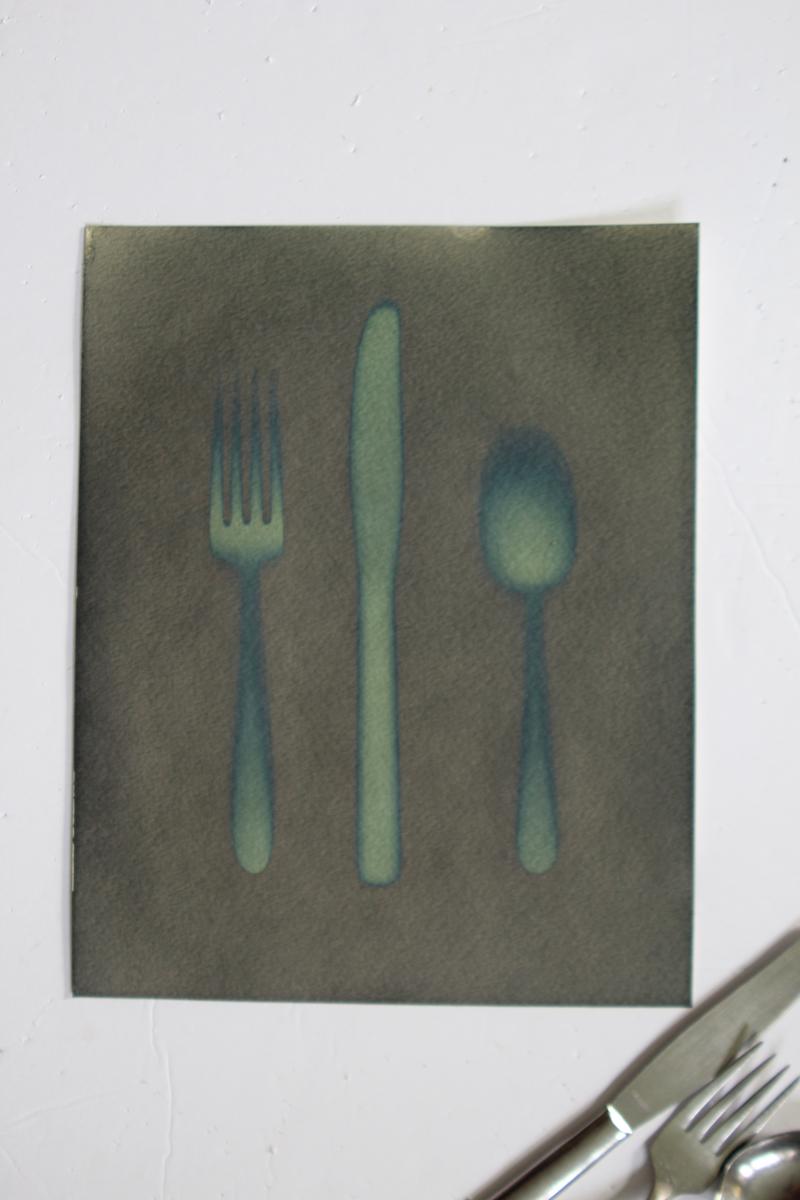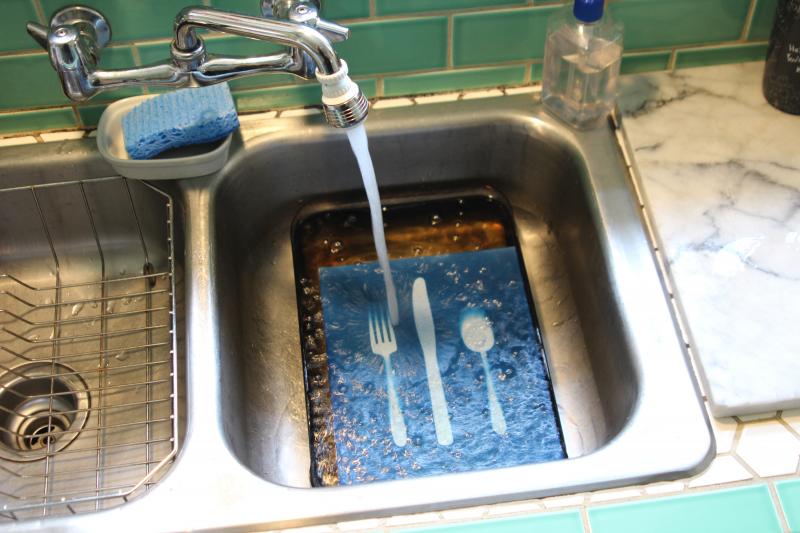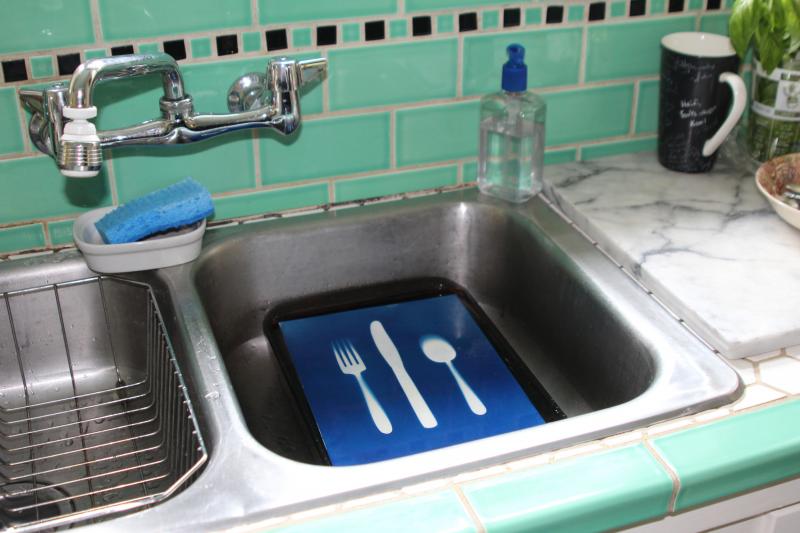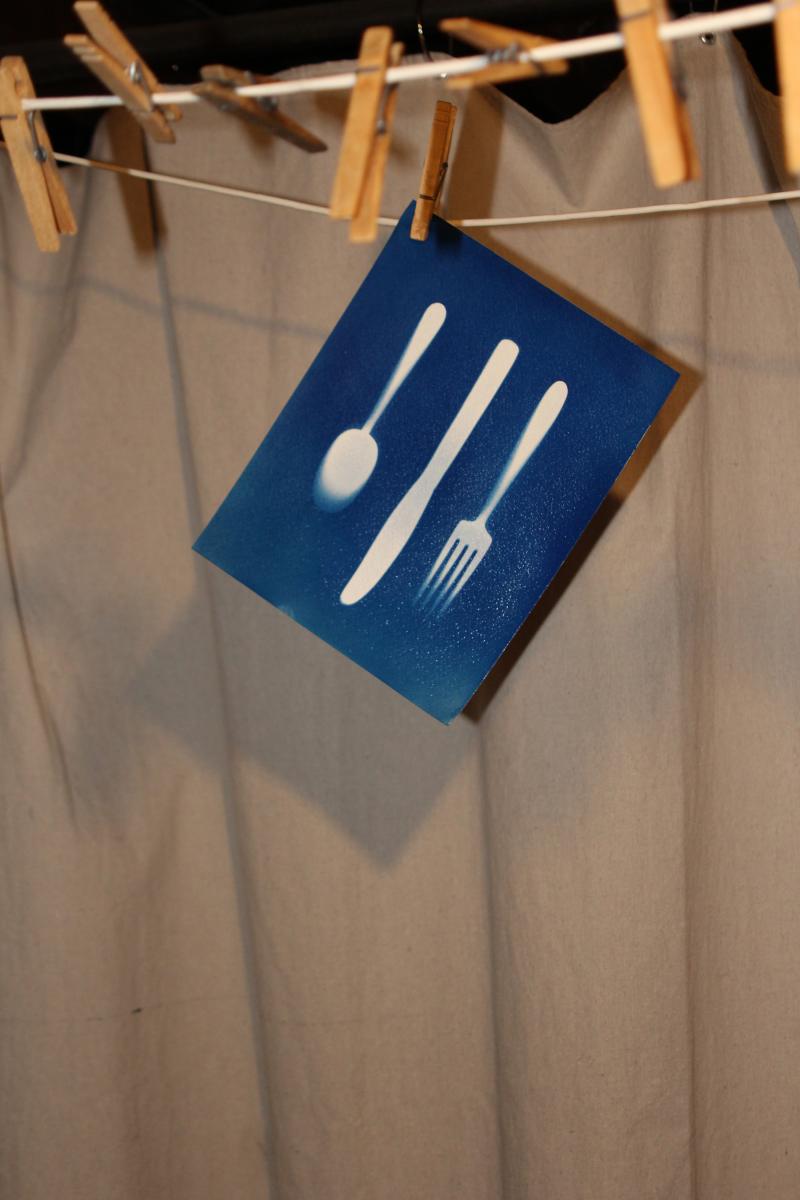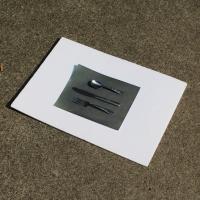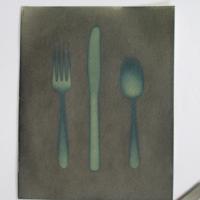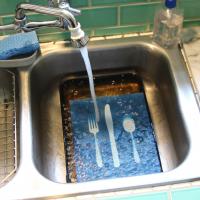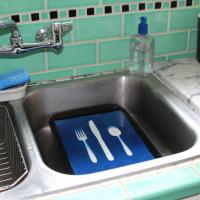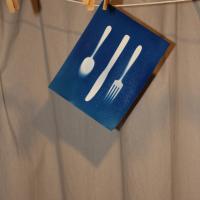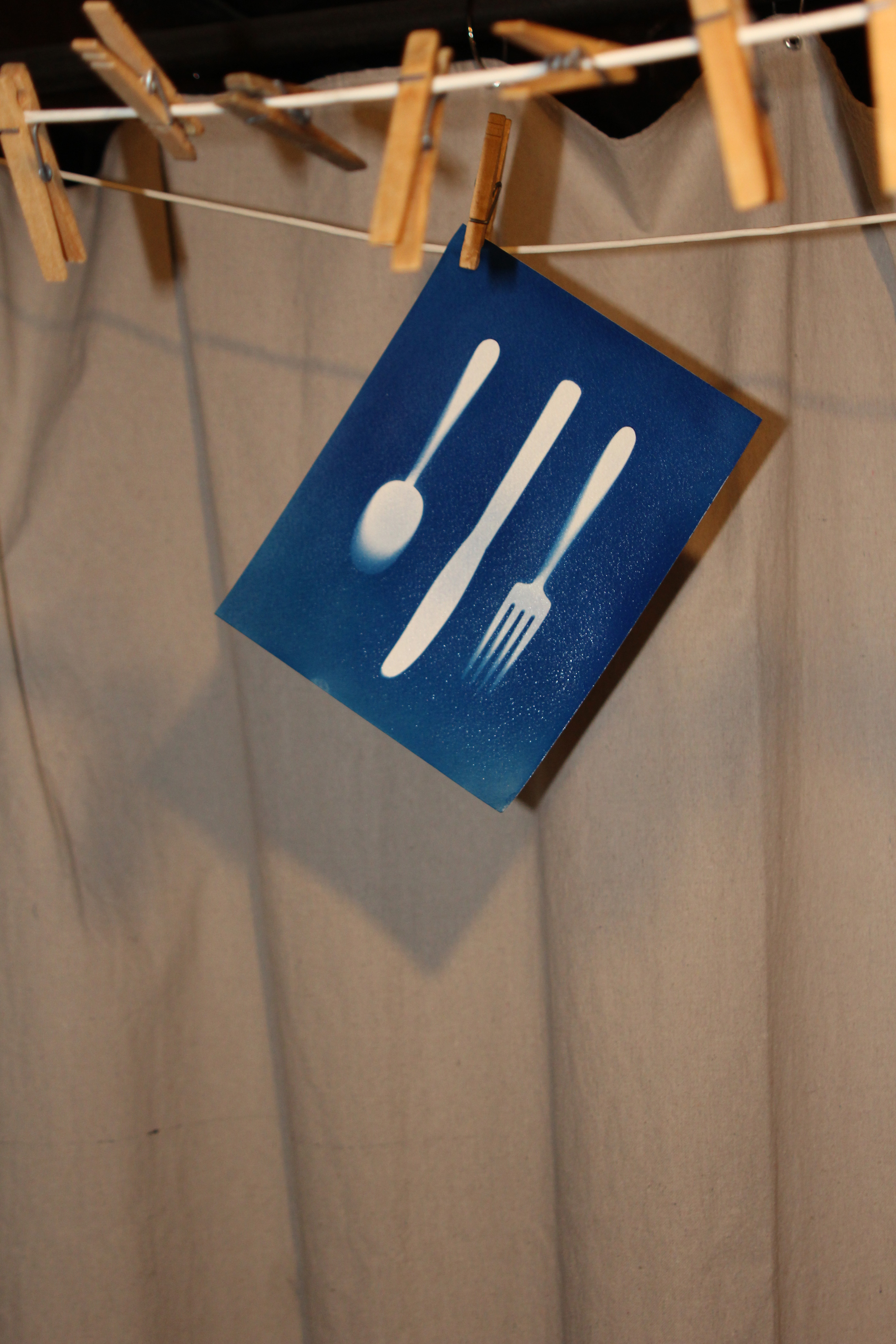Portland-based photographic artist Heidi Kirkpatrick makes cyanotype art and is excited to share her Art Lives Here Creativity Kit!
Cyanotype is a photographic printing process that produces a cyan-blue print. Engineers used the process well into the 20th century as a simple and low-cost process to produce copies of drawings, referred to as blueprints. Shortly afterwards, many artists began to use the process as well to investigate the natural world and explore their own creativity.
Sun Print paper and fabric can be purchased online or in your local art supply store. You can use organic material like leaves and flowers or objects from around your house or classroom to create one-of-a-kind art prints!
Materials:
- Coated cyanotype paper or fabric
- Cardboard or other flat, stiff material to use as base
- Objects to create designs
- Container of water larger than the paper, or sink, to rinse
Your Turn
Instructions:
- Keep the black bag containing the paper closed until you are ready to use it. The paper is light sensitive so you’ll want to start the process indoors, preferably in a dimly-lit room.
- Choose the objects you want to use for the design for your sun print. The area that is blocked by the object will be white on your final print, the shadow of your object will be a light blue, and the darkest blue area of your print will be where the sun directly hits the paper. Think about the positive and negative space you’ll create when you arrange your objects.
- Carefully open the black bag and remove one sheet of paper, then immediately close the bag.
- Place your paper and objects on a piece of cardboard or another hard surface so you have a flat base to work on. Feel free to move the objects around until you like the way it looks. Now you are ready to go outside and expose your paper to the sun, which will activate a scientific process.
- Carefully cover your paper and objects with the black bag and carry everything outside to a sunny spot.
- Remove the black bag and expose to sunlight! This part takes patience--depending on how bright the sun is, you may want to leave it outside for 5-20 minutes. The longer you leave it, the darker the blues will be on your final print.
- Bring your base, paper and objects back inside and remove the objects. Your cyanotype design will appear immediately like magic!
- Rinse the paper in water from a sink, tub or hose until the water runs clear.
- Place your print somewhere flat to air dry. Watch as the blues become more vibrant and the contrast becomes more extreme.
- You may love your cyanotype print just as it is or you may want to use it as a base to draw, paint or collage. Try it again! Use the same objects to create a new composition or find different objects with interesting shapes and transparency.
Related Creativity Resources

Heidi Kirkpatrick: Art Lives Here // El Arte Vive Aquí
Artist Heidi Kirkpatrick discusses her creative process and the inspirations behind her Art Lives Here Creativity Kit.

Suits of Admiration
The suit of armor was crafted in the 1700s during the Edo period, a period of over 250 years of peace in Japanese history. What do you notice on the armor that hints at what was admired about samurai warriors?
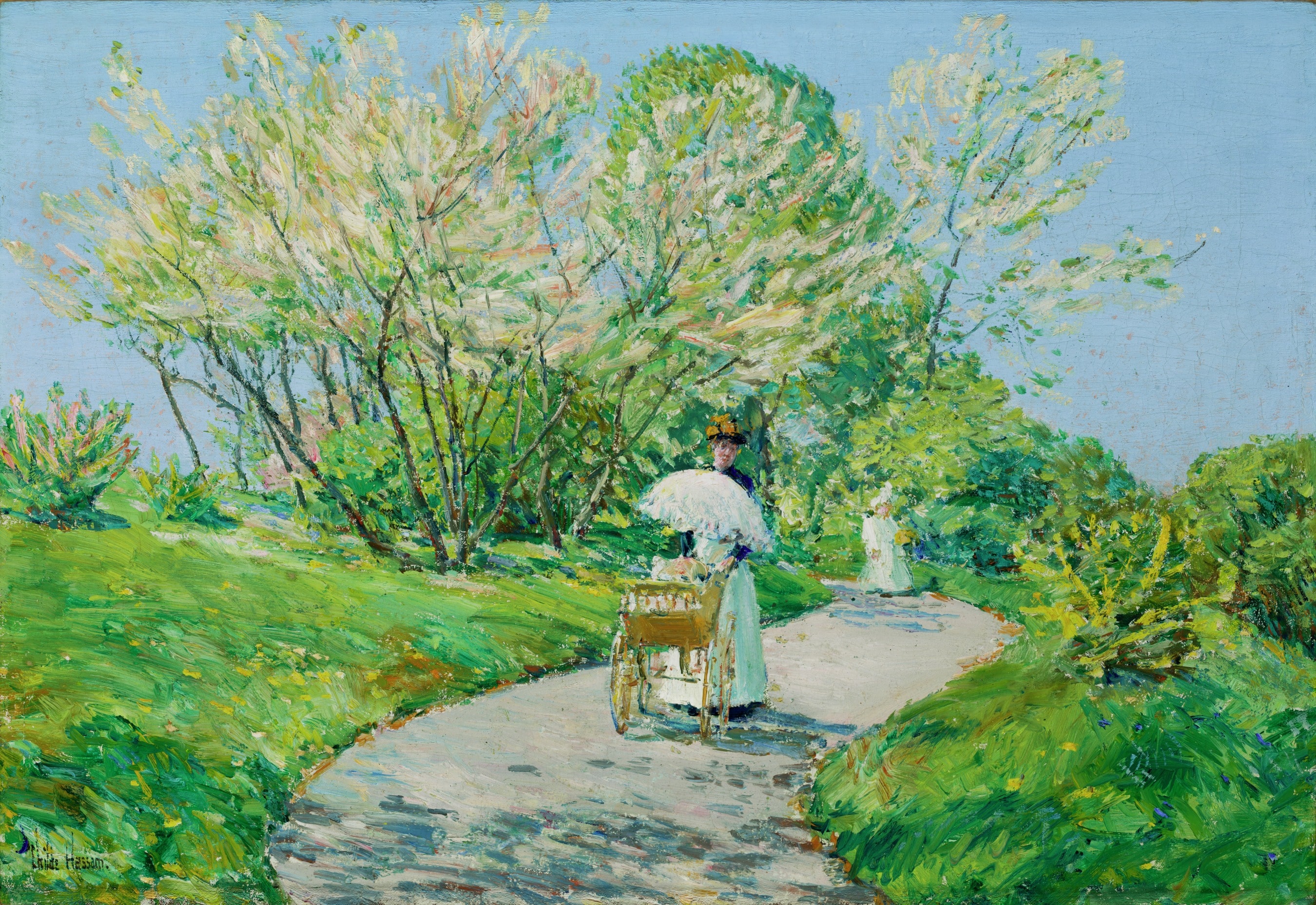
Out of Frame
Think outside the frame with this fun activity where you are asked to use your imagination to expand an existing work of art.
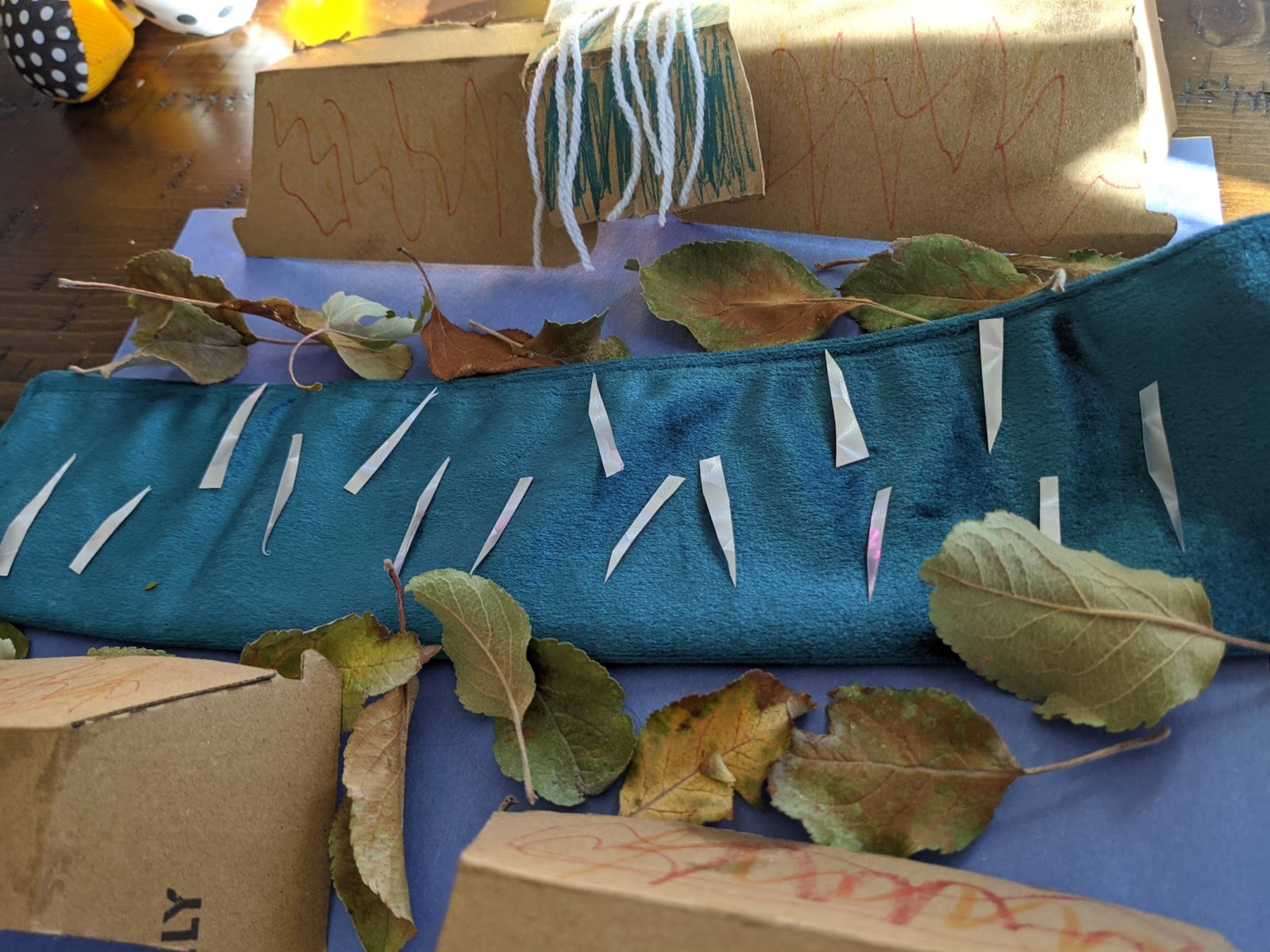
Crea tu propio universo
¿Qué pasaría si pudieras crear tu propio universo? Ndzube incorpora colajes de fotos de sus propias manos y ojos (y a veces las de los ojos de sus amigos) en muchas de sus figuras y criaturas. Haz tu propio colaje (una obra de arte creada pegando varios materiales como fotografías, papel o tela sobre una superficie) para construir un universo imaginado.

How to Make a Sewing Card
Recreate an emotion or memory into a sewing card, inspired by Marie Watt's artwork Butterfly.
